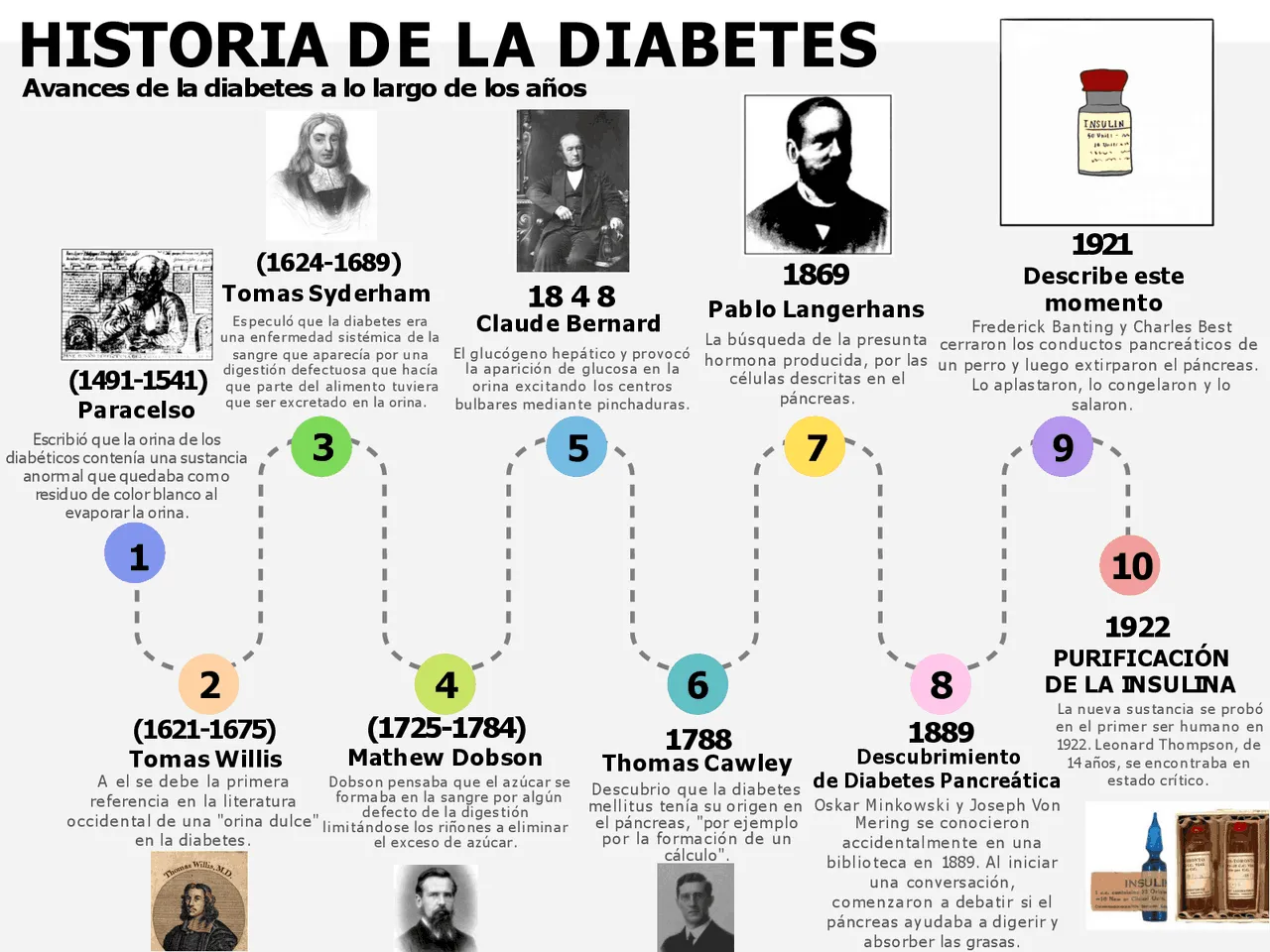It seemed an interesting reading.They need to update some things, such as bombs, but as a summary, and for those who start, I think it can be didactic.It is taken from the website of a Spanish start-up that is trying to put a glucose reader on the market without the need of the awkward puncture:
"We are at a time in the history of great advances, many are for leisure and enjoy.
But how did people live with diabetes 60 years ago?What technologies were the principle of great advances?Do you want to discover how your life would have been a few decades ago?If you are a person with diabetes, it is easy for some ancestor to have it too.
Before 1964
Formerly, the only treatment for your great -grandparents and great -grandparents to be able to avoid large glucose peaks was to have great control over the diet.
It was like that until a good summer day of 1921, Professor Frederick Banting and his student Charles Herbert Best made one of the greatest discoveries in the history of diabetes: insulin.Although to tell the truth, the first doses of insulin applied were extracted from the pancreas of different animals.Well, it wasn't going to be and succeed.
From 1923, the insulin you found in the market came from the laboratories of the pharmaceutical company Eli Lilly and was marketed under the name of "ilets."However, unless your great -grandparents were mounted on the dollar, to forget to acquire it.To meet the annual needs of a patient, approximately 50 pigs were needed.
During the 50s, a scientist named Hageden, began to market it from a combination of insulin with protamina, a protein.This advance allowed to increase the action time in 24 hours and no longer needed as many injections as before.In the year 55, Sanger made the sequencing of proteins, key research for the discovery of the insulin amino acid sequence.
1964 - 1970
In 1964, we can talk about the first reactive strips, invented by the Armes company.You had to place a drop of blood on the paper strip and in a minute, with a color change it communicated the sugar levels.However, the reality is that most of our grandparents and parents could not access it, only through doctors and health professionals.
1970 - 1976
This same company did not stay in compliance and continued to investigate to develop the first glucometer, which more than glucometer was rather a rather unreliable reflectometer.And how did it work?Very different from what we know today.He made a reading based on the light reflected by the strips.The light beam was taken to a photoelectric cell and translated it into glycemia values.It was a fairly heavy and expensive instrument, but don't worry.This invention did not ruin your grandparents either, since it was not available to the general public.
As of 1975, the first production of human insulin in the laboratory is carried out.
1976 - 1983
During these years, several studies were conducted about the effectiveness of the devices for the control of blood glucose levels.Thus, in 1976, the first insulin bomb appears.They called her Biostator, and as her name suggests, she looked like a great computer taken from an Orwell novel.However, a great advance had been achieved: measure and administer insulin in the body every 5 minutes.Another advance that was not available to patients ... unless you suffered diabetic ketoacidosis.That we do not recommend it to anyone.
1983 ...
In 1983, theDanish pharmaceutical laboratory Novo Nordisk introduced insulin feathers in the market.
It is from this decade, when most people with diabetes can enjoy portable glucose meters, different types, sizes and colors.With considerable improvements, in the measurement, times, control and data registration.
Likewise, the insulin we know today is achieved through genetic engineering techniques, and allows it to become a treatment available to the majority.
What advances these years await us.
Measurement without punctures.In Igluco we are developing a new solution for the measurement of glucose in a non -invasive way, which will improve the life of diabetics in many aspects.It is a glucometer that infrared the blood glucose level.You can finally forget the punctures.Thanks to new technologies and our research, your data is sent to your mobile so you can save them, and thus have optimal control and share them with your doctor. "
About Igluco: Link


